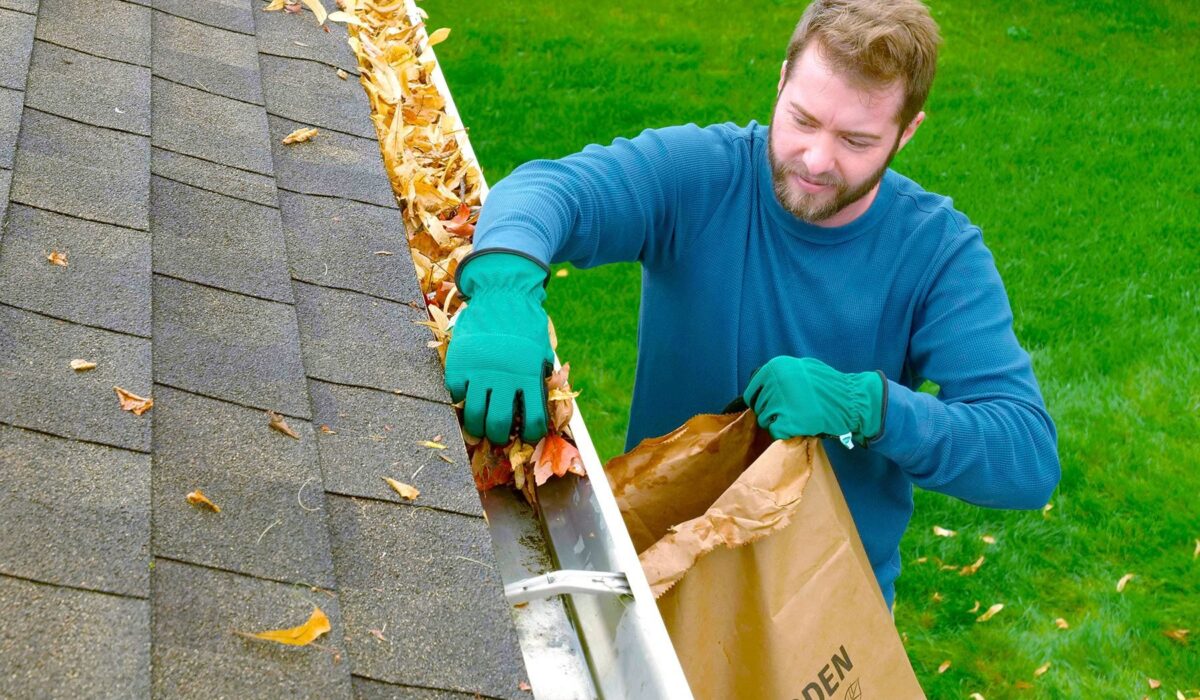When people think of roof maintenance, they often picture inspecting shingles, checking for leaks, or replacing flashing. But one of the most overlooked yet essential components of a healthy roofing system is your gutters. Yes—those seemingly minor troughs along your roofline play a huge role in protecting your home from seasonal roof damage all year long.
In this guide, we’ll explore how your gutter maintenance impacts your roof, why neglecting them can lead to serious structural issues, and what you can do (with the right tools and techniques) to stay ahead of problems. Whether you’re a new homeowner or have been in the same house for years, this is one maintenance task you can’t afford to ignore.
Why Gutters Are a Key Part of Roof Maintenance
Your gutters aren’t just there to catch water—they’re an essential drainage system that keeps your roof and home structurally sound.
When functioning properly, gutters:
- Direct rainwater and snowmelt away from the roof and foundation.
- Prevent water from backing up under shingles.
- Reduce the risk of leaks, rot, and mold in your attic or siding.
- Minimize the formation of ice dams during winter.
- Prevent soil erosion and basement flooding near your home’s perimeter.
If gutters are clogged, cracked, sagging, or poorly positioned, they can’t perform any of these duties effectively—putting your roof at risk.
The Hidden Cost of Neglected Gutters
As a trusted roofing contractor, we see the downstream effects of gutter neglect all too often. Some of the most common issues include:
1. Water Damage
Clogged gutters allow water to pool and overflow, which can lead to moisture seeping under shingles. Over time, this accelerates the breakdown of underlayment and decking—potentially leading to rot and major roof repair needs.
2. Ice Dams
In the winter, debris-filled gutters can trap ice and snow on the roof. As heat escapes from your attic (especially if your attic insulation is poor), it melts snow unevenly, refreezing at the edges and creating ice dams. These dams block water from draining, forcing it under the shingles and into your home.
3. Mold & Mildew
When excess moisture builds up near your roof or foundation, mold and mildew find a perfect breeding ground. This can compromise your indoor air quality and cause health concerns for your family.
4. Roof Sagging or Collapse
When gutters overflow and trap water against fascia boards and rafters, the excess weight and moisture can cause wood to soften and sag. In extreme cases, this damage can lead to parts of your roof becoming structurally unsound.
Year-Round Gutter Maintenance Tips
Keeping your gutters in top shape doesn’t require professional help every time—but it does require consistency and the right approach. Here’s how to protect your roof with seasonal gutter care:
Spring
- Clear out winter debris like twigs, leftover leaves, and roof granules.
- Inspect for cracks or sagging caused by snow and ice weight.
- Reposition or tighten any loose fasteners.
- Check for standing water in gutters or near downspouts—this could signal a blockage.
Summer
- Watch for overgrown trees and trim back branches to prevent clogs.
- Hose out your gutters to ensure they’re draining properly.
- Inspect gutter seams and joints for leaks and seal as needed.
- Consider installing gutter guards to reduce maintenance.
Fall
- This is the most important time for gutter care—falling leaves are the #1 cause of clogs.
- Clean gutters thoroughly every 2–3 weeks until leaves stop falling.
- Ensure downspouts are free of debris and direct water at least 4 feet away from your home.
- Examine your roof before winter hits to catch any signs of hidden damage.
Winter
- Remove snow and ice buildup from gutters (use a roof rake or call a professional).
- Look for icicles or water stains as a sign of poor drainage.
- Ensure attic insulation and roof ventilation are optimized to prevent ice dams.
- NEVER use salt or chemicals in gutters. They can corrode metal and roofing materials.
Gutter Cleaning Tools and Safety Gear
If you’re tackling gutter maintenance on your own, here’s what you’ll need:
Tools:
- Heavy-duty gloves
- Ladder stabilizer
- Scoop or trowel
- Bucket or tarp for debris
- Garden hose with a spray nozzle
- Gutter cleaning wand (optional)
- Sealant or gutter caulk
Safety Tips:
- Always use a sturdy ladder on level ground.
- Have a spotter when working on high areas.
- Don’t lean too far over the ladder. Move it instead.
- Avoid working during wet or icy conditions.
When to Call a Roofing Contractor
While seasonal cleaning can be a DIY job, certain situations call for professional help:
- You notice sagging gutters or water pooling near your foundation.
- Water is backing up under your shingles.
- Asphalt granules are in the gutters.
- Gutter seams are leaking consistently.
- You’ve experienced recurring ice damming.
- You’re unsure whether a drainage issue is coming from your roof or gutters.
These issues could indicate the need for more serious roof repairs from a licensed roofing contractor. The sooner these issues are addressed, the better we can extend your roof’s lifespan and prevent seasonal roof damage before it begins.
The Bottom Line: Don’t Overlook the Gutters
When it comes to protecting your roof, the little things matter—and gutter maintenance is one of the biggest little things you can do. A clean, well-functioning gutter system is your roof’s best friend, helping prevent water damage, mold, and structural issues in every season.
Add gutter cleaning to your roof maintenance checklist, especially in the fall and spring, and you’ll save time, money, and stress in the long run. And when in doubt, don’t hesitate to reach out to a qualified roofing contractor for expert guidance and peace of mind.


